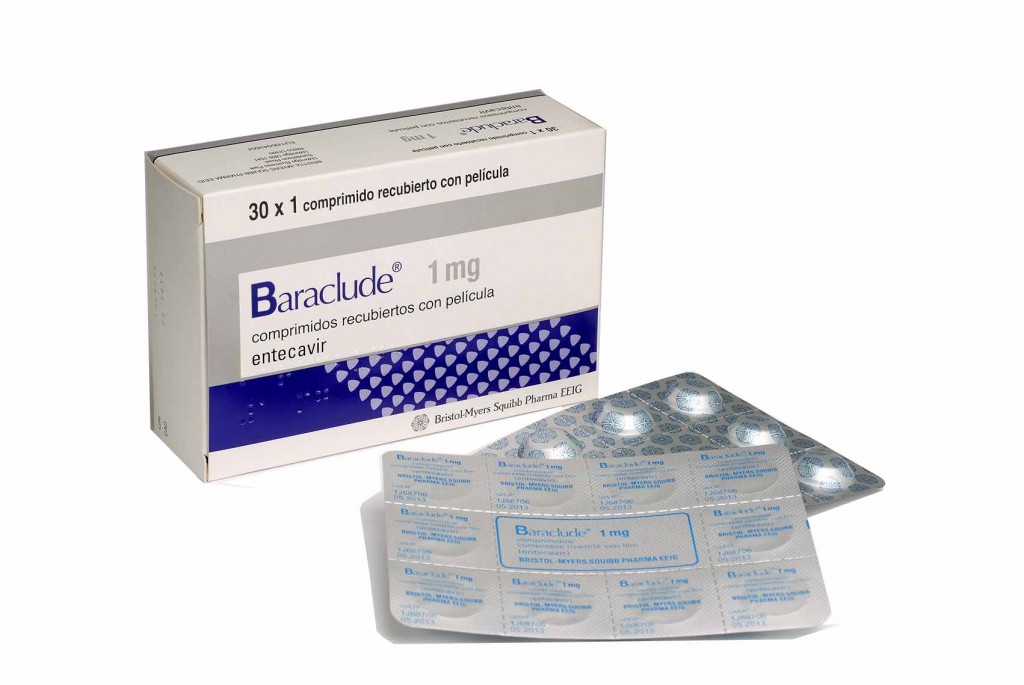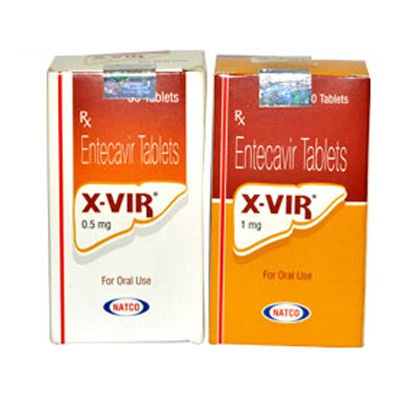In a development with significant ramifications, Natco and Bristol Meyers Squibb entered into a settlement over a patent dispute involving Entecavir (Baraclude) a drug used in the treatment of hepatitis B infections. The patent which was disputed by NATCO pharma and settled at IPAB relates to a pharmaceutical composition for once a day oral administration comprising upto 1% of Entecavir.
Entecavir US Patent status: BMS and Teva
Entecavir is protected by two patents in the US viz: US5206244– product patent which covers the Entecavir molecule and US6627224 which relates to Entecavir compositions effective for once a day oral administration.
The Orange book lists only the product patent US5206244. Strangely enough the composition patent US6627224 is not listed in Orange book. The Orange Book lists patents that are purported to protect each drug. Patent listings are provided by the drug application owner, and the FDA is obliged to list them. It seems like BMS had applied to have the once daily composition patent OB listed, but for some reason it wasn’t listed.
Entecavir is available as 0.5mg and 1 mg tablets and I believe it not possible to design around this broad composition patent. Independent claim 1 of US6627224 is broad and claims “A pharmaceutical composition effective for once a day oral administration to treat hepatitis B virus infection in a human adult patient comprising a pharmaceutically acceptable carrier and from about 0.01 mg to about 5 mg of entecavir.”
Teva challenged the product patent and successfully invalidated the product patent as being obvious over prior art. As readers may recall Shamnad had extensively analyzed this in his post earlier. After this successful invalidation Teva went on to launch the generic version of Entecavir tablets. It is interesting to note that Bristol Meyers Squibb did not sue Teva over the composition patent. Also there are no news reports indicating that there was a settlement agreement between Teva and BMS over the composition patent.
Despite invalidation of the product patent, there aren’t any generic players apart from Teva in the US generic matter. It is quite probable that the composition patent might be blocking entry of other generic players.

India patent status: Why did Natco settle with BMS ?
In India there is no product patent for Entecavir because Entecavir is a pre-95(pre TRIPS) molecule and India did not grant pharma product patents before 1995. The once daily composition is protected in India by IN213457. Independent claim 1 of IN213457 reads as “A pharmaceutical composition effective for once a day oral administration to treat Hepatitis B virus infection in a human adult patient comprising up to 1% Entecavir adhered to a carrier substrate of kind and pharmaceutically acceptable excipients as herein described, wherein said percentage is based on a total composition weight of 100mg.”
The Indian once daily composition patent claim is definitely narrower than its corresponding US claim. The US claim does not limit its composition to a specific process of preparing the composition.
The Indian composition claim clearly suggests the use of Fluid bed granulation (Entecavir adhered to a carrier substrate) as a method for preparing the entecavir composition. This explains why like many generics could design around this composition claim and launch their generic versions in India i.e. Dr. Reddy’s Entaliv, Cipla’s Entavir, Zydus Cadila’s Entehep.
Industry thought leader and expert Dr.Mahalxmi Andheria opined that “It is possible to design around the Indian once daily composition claim, since the claim is limited by two aspects which can be varied (i) process i.e. adhering entecavir to a substrate (ii) total composition weight of 100mg”
As readers may recall BMS had initiated a patent infringement suit against Ranbaxy, however the Delhi High court denied injunctive relief to BMS.
Subsequently Natco launched its generic version X-Vir and challenged the once daily composition at IPAB and entered into a settlement with BMS. The settlement is puzzling on many counts; one wonders why Natco decided to settle a patent dispute when other generic players in India found a way to avoid/design around the composition patent. The fact that BMS did not sue Teva over the composition patent in US is equally perplexing.
As I had opined in an earlier post “Patent settlements especially settlements in the pharmaceutical sector may prove to be tricky from a competition law perspective. In case of settlements involving patents of questionable quality, it is the society who invariably pays the price for a delay in market entry resulting from such agreements.”
But this settlement between Natco and BMS is not a “pay for delay” settlement since Natco has already launched its generic version X-Vir in the market. The terms of the patent settlement are confidential since the parties requested that the registry should not allow any third party to see the terms of settlement.
I’m hoping our informed readers can come up with an explanation for the mysterious Natco-BMS patent settlement. Readers, over to you!


A drug launch has two components – 1) a valid patent that provides protection and 2) FDA approval that is not for the API (drug molecule) but for the formulation that has been shown to have efficacy in phase 2 and phase 3 trials. A generic drug maker can only alter the formulation so much as allowed by FDA rules. So it seems Natco might be aiming for launch in the US market with the formulation approved by FDA and BMS could essentially be trying to protect the US market via the settlement.
My 2 cents 😉 ~ pallavi
So it seems Natco might be aiming for launch in the US market with the formulation approved by FDA and BMS could essentially be trying to protect the US market via the settlement.
@pallvi- this still leaves many questions unanswered:
BMS did not sue Teva for the composition patent and the composition patent is not listed in the orange book! Also the product patent has been invalidated
So Natco could have easily gone ahead with the launch in US like Teva
They did not need to work out a settlement for the Indian composition patent !!
The Independent claim in Indian patent is too narrow and can be easily surpassed by person skilled in art. Two terms “adhered to a carrier substrate” and ” total composition weight of 100 mg”, makes independent claim vulnerable. So, i dont think any company (Innovator) with such claim will go for any agreement with other company for ‘not to enter into market’ or ‘for any other reason to restrict entry into market’. As claim is too narrow in this case NATCO or any other company can easily surpass the claim. Here the above so called “settlement”, “Agreement” is for what? unless and untill there is clear cut revelation by registry on the agreement (may be by RTI), no one can say about the existence f this kind of deal as this agreement will do not make any sense.
If we look by taking into larger view, generally granted US patent contains narrower independent claims as there stricter conditions and rigorous examination. And in granted Indian patent contains broader independent claims due to there so called “strict” examination, But in above case thats not the case. Innovator change the language of independent claim. “For what reason he done this?” Its like a suicide by changing the language of independent claim.
One more point is even if BMS and NATCO goes in to agreement but this will do not prevent others to enter into market. So saying any thing about secret agreement between BMS and NATCO is something hypotheticle unless revealed by registry.